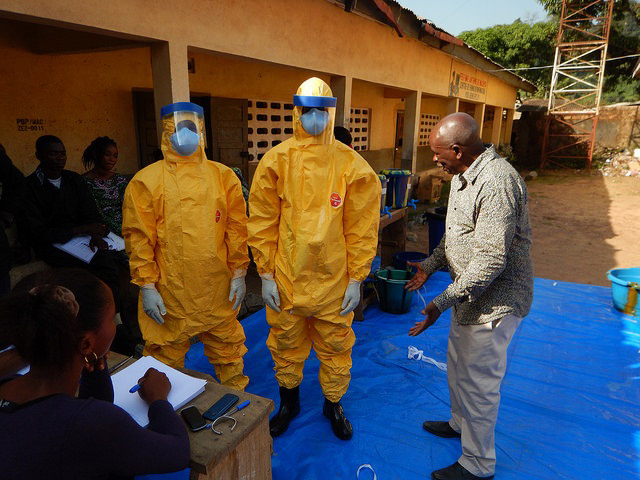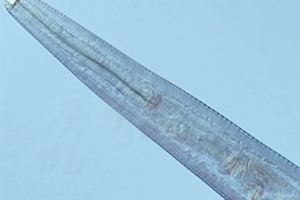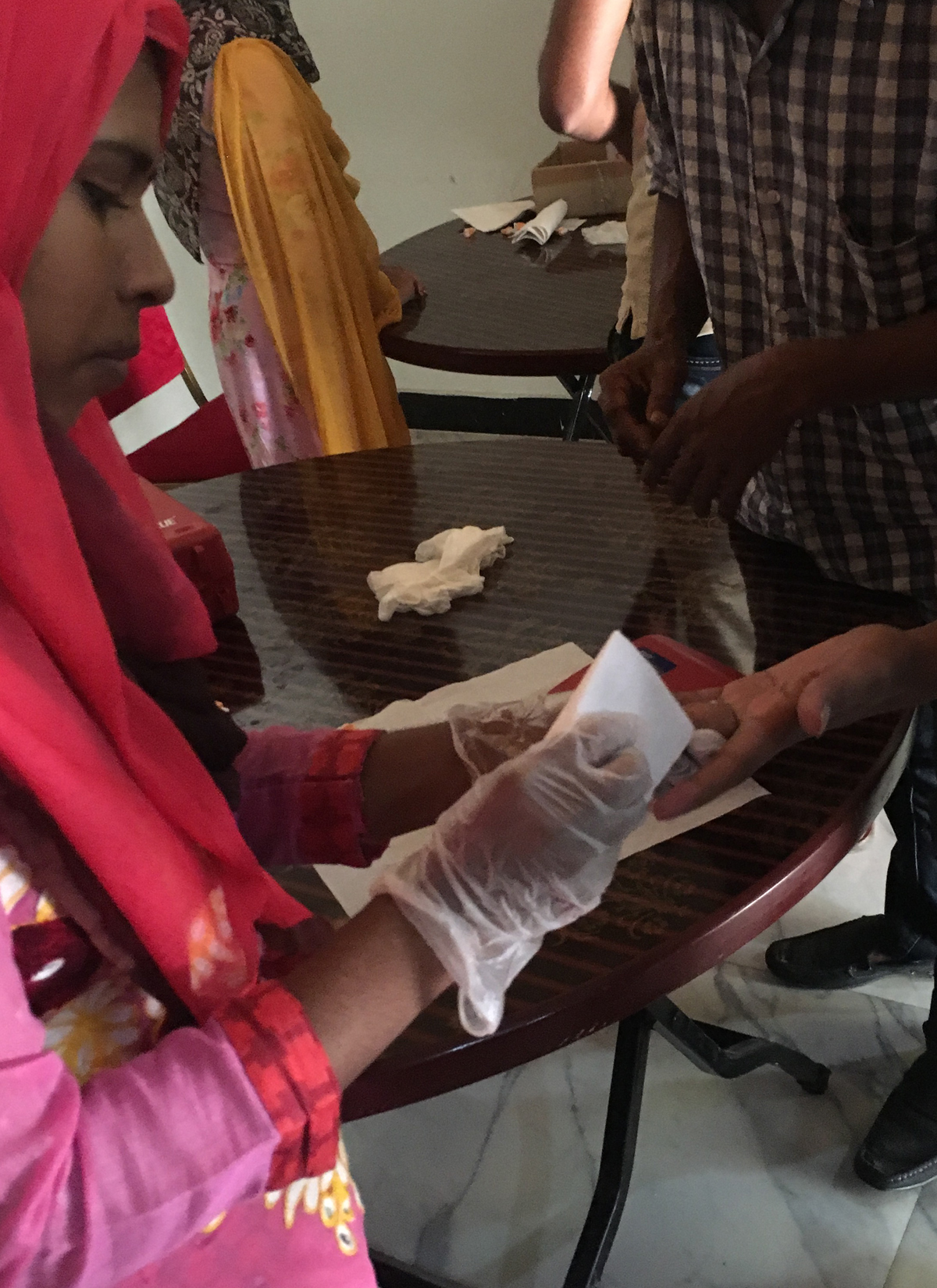Featured CDC Articles

Health workers receive Ebola response training during the 2014 outbreak
CDC-led Study: Persistence of Ebola Virus after the end of widespread transmission in Liberia: An Outbreak Report
A Year after Initial Infection, a 2015 Flare-Up of Ebola Emphasizes the Need for Continued Surveillance
The 2014 Ebola outbreak in West Africa led to improved disease surveillance and response capacity in affected countries, which were effective in ending widespread transmission. However, near the end of the epidemic in 2015, several focal clusters of infection were identified. One cluster in Liberia raised the possibility of transmission from a persistently infected female survivor. Investigation of the source of infection for this cluster provides suggestive evidence of Ebola virus disease persistence and highlights the risk for outbreaks after interruption of active transmission.
Evidence of viral persistence among Ebola virus disease survivors underscores the need for risk assessment and focused prevention efforts, as well as sustained capacity to rapidly detect new cases and implement an effective response to prevent a widespread outbreak.
- Read Lancet Infectious Diseases press release
- Read full Lancet Infectious Diseases article
- Learn more about CDC’s Global Health Security work
- Browse more global health security publications
CDC-led Study: Children in Rohingya Refugee Camp Exceed Emergency Levels for Anemia and Acute Malnutrition
Since the fall of 2017, an additional, estimated 700,000 Rohingya people have fled violence in Myanmar and crossed the border to Cox’s Bazar, Bangladesh. They joined an estimated 200,000 who had fled in earlier waves since the 1990s. The CDC-led study, “Acute Malnutrition and Anemia among Rohingya Children in Kutupalong Camp, Bangladesh,” in collaboration with the partner agencies UNICEF, UNHCR, Action Against Hunger, World Food Program, and Save the Children, was published in Journal of the American Medical Association (JAMA) on April 10. It found that levels of acute malnutrition and anemia in children recently and previously displaced exceeded global emergency thresholds at the time of the assessment. This study presents the first data on the nutritional situation of Rohingya children in Cox’s Bazar since the mass displacements.
- Learn more about CDC’s Global Emergency Response and Recovery work
- Read Journal of the American Medical Association press release
- Read the full Journal of the American Medical Association article

Anterior of Thelazia gulosa showing buccal cavity, cuticular ridges, and esophageal-intestinal junction.
CDC-led Study: Oregon Woman First Reported Human Case of Eye Worm Parasite, Thelazia gulosa, Typically Found in Cattle
“Cases of eye worm parasitic infections are rare in the USA, and this case turned out to be a species of the Thelazia that had never been reported in humans. Previously, it was thought that there were only two different species of these eye worms that infected humans worldwide. Now, we have to add Thelazia gulosa, a third one to the list.”– Dr. Richard Bradbury, parasitologist with CDC’s Parasitic Diseases Reference Lab.
- Learn more about Thelazia
- American Journal of Tropical Medicine and Hygiene press release
- Read American Journal of Tropical Medicine and Hygiene journal article

CDC HIV Expert Wins Samuel J. Heyman Award for Career Achievement
CDC HIV Expert Wins Samuel J. Heyman Award for Career Achievement
Last week, the Partnership for Public Service named CDC’s Tedd V. Ellerbrock, M.D., the 2017 winner of the Samuel J. Heyman Service to America Medal for Career Achievement in recognition of the vital role he has played in building, expanding, and improving the U.S.-led program that provides HIV treatment to more than 11 million people around the world.
Over the past 14 years, Dr. Tedd Ellerbrock has played a central role in the U.S. President’s Emergency Plan for AIDS Relief (PEPFAR), the largest commitment by any nation to address a single disease in history. “We are where we are today because of Dr. Tedd Ellerbrock and people like Tedd around the globe,” said Ambassador Deborah Birx, U.S. global AIDS coordinator. “He has worked tirelessly to help change the course of the pandemic.”
- Read the full press release here
- Learn more about Dr. Ellerbrock’s CDC career
- Read more about CDC’s Global HIV Treatment work
- Page last reviewed: August 24, 2018
- Page last updated: August 24, 2018
- Content source:
Global Health
Notice: Linking to a non-federal site does not constitute an endorsement by HHS, CDC or any of its employees of the sponsors or the information and products presented on the site.


 ShareCompartir
ShareCompartir


